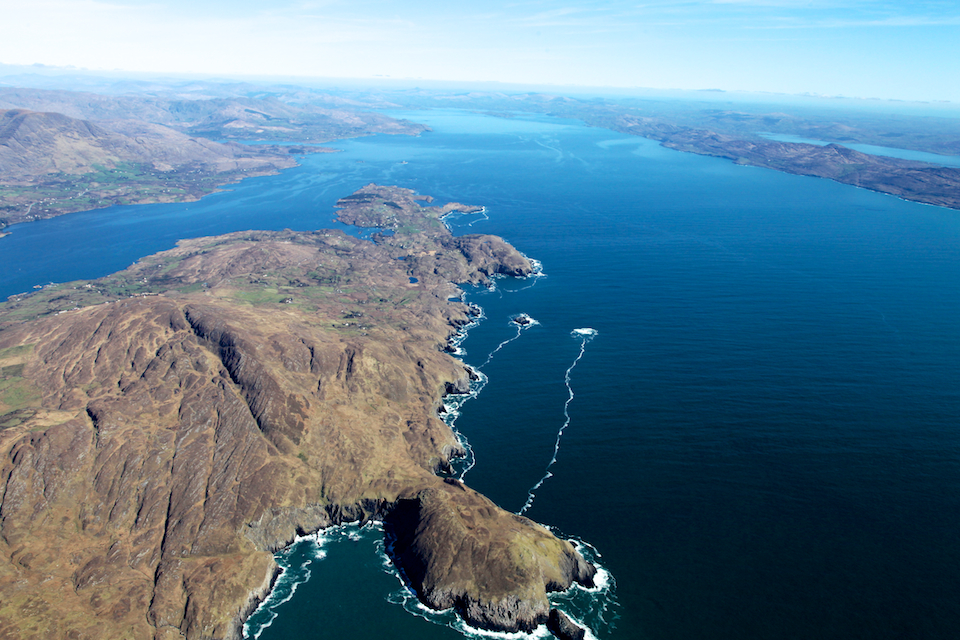The Importance of COP15

By Pádraic Fogarty, Campaign Officer with the Irish Wildlife Trust
When the gavel went down at the end of COP21 in Paris in November 2015 there was a moment of great relief and jubilation. The Paris Agreement had decided that global temperatures should not be allowed to rise above 1.5 degrees Centigrade and stay “well below” 2 degrees. This was important as the small island Pacific nations had argued vehemently that any target that did not recognise the 1.5 degree limit would serve them a death sentence.
The Paris Agreement has so far not stopped the rise of greenhouse gas emissions but it did allow scientists and policy makers to set about modelling how our society and economy could meet the 1.5 degree target. It is where we get the need for halving emissions by the end of the decade and ‘net zero’ by 2050. It’s why we know that carbon removals, e.g. through rewilding or yet-to-be-invented technologies, are needed as well as emissions reductions.
In short, the goal allowed for the creation of a policy pathway – a necessary prerequisite for decisions regarding infrastructure investment, taxation, behavioural change and lots more. We find its imprint in our own Climate Act which came into law in 2021. The Paris Agreement shows the importance of clear goals and targets. It has even spawned protest slogans such as “1.5 to stay alive” – everyone is settled on what’s needed.
In contrast, look at biodiversity. Biodiversity is hard to measure, poorly understood, mobile, mostly invisible and inherently complex. While some ecologists pushed for a ‘1.5 for nature’ goal around which the world could rally, finding a single metric is simply too hard.
But biodiversity needs measurable targets and at this moment of acute ecological crisis, we don’t have them. The COP15 conference currently underway in Montreal, Canada aims to rectify that and for this reason it is the most important meeting on biodiversity… probably ever. The last agreement, from 2010, was an abject failure, not a single target was reached. But this deal was also criticised for not having strong enough metrics or the clear scientific backing that supported humanity staying within liveable planetary boundaries.
This time is different. We have a much better (though still far from perfect) understanding of what is at stake. We know that key ecosystems, such as the Amazon, tropical coral reefs and the Boreal forest are so important that collapse could mean triggering a ‘tipping point’ into an irreversible shift to a new planetary state that we can’t begin to imagine. We know that we must go beyond merely halting the loss of biodiversity, damaged ecosystems – forests, oceans, rivers and peatlands – must be restored. If COP15 is successful we will see an agreement that puts figures on exactly how much restoration is needed.
The nearest thing COP15 has to a 1.5 goal is what’s referred to as ‘30×30’: protecting at least 30% of land and sea by 2030 (many scientists think this figure needs to be nearer 50%). The signs so far are good, the EU (though not specifically Ireland) has signed up, along with a number of other countries.
The goal is controversial and so, if it is agreed, must come with guarantees for indigenous people and local land rights holders. This shouldn’t come as a surprise -it doesn’t matter whether we’re talking about the Amazon rainforest or bogs in the west of Ireland – conservation can only succeed if it includes local people.
But 30×30 will not be enough. The way we use nature has to change. UN special advisor, Jeffrey Sachs, told the COP this week that the way we are using land and sea is “absolutely not sustainable” and that these uses are “absolutely not resilient” to the massive climate and ecological changes that are already underway. This means we must transition to food production and other non-food land uses (forestry for instance) that stops eroding its very foundations. There is a strong push to make sure that ‘agro-ecology’, food production that protects soil and water while minimising inputs, is included in the final text. There is pushback from pesticide and fertiliser companies.
We are also looking at targets for the reduction of harmful subsidies by €500 billion per year, controls to stop the spread of alien invasive species, protecting rights for genetic resources, access to green spaces in urban areas and specific goals for the reduction in rates of species extinction. This all comes with a price tag and we’re seeing a business presence in Montreal never before seen at a biodiversity COP. Governments will be tempted at the thought of market forces unleashing the vast sums of private finance for nature restoration. Businesses here are claiming to be all ears but the reality is that saving life on earth is unlikely to make anyone fabulously wealthy. I see no substitute for governments stepping in to regulate businesses, especially the ones that profit most from resource extraction, and taxing them to pay for the work that needs to be done.
Implementing deals like these is an altogether different ball game. The text already emphasises that if it is to succeed then it needs an ‘all of government’ and ‘all of society’ approach. We all need to be behind it in other words. Ministers for the environment that are here in Montreal are not the ones that need convincing, it is the ministers for agriculture and fisheries, and for finance, in particular, that need to see the value – keystones that are currently not in place.
And we need to see communities and ordinary individuals mobilised a lot more than they are currently. Signs of change are in the air however. The Citizens’ Assembly on biodiversity loss shows that when people are given the information they can become great champions for change. But we don’t have forever. We have to move from talk to action much, much faster than we currently are.







